Content
Bulbous white web is a rare mushroom found in only a few regions of Russia. The only representative of the genus Leucocortinarius is famous for its good taste.
What does the bulbous white-webcap look like?
Bulbous webbing (Leucocortinarius bulbiger) or tuberous is one of the most recognizable mushrooms of the Ryadovkovy family. Also called the white spider web. It is difficult to confuse it with representatives of another species, since the height of the fruiting body reaches 8-10 cm. You can also recognize this specimen by its characteristic distinctive features.
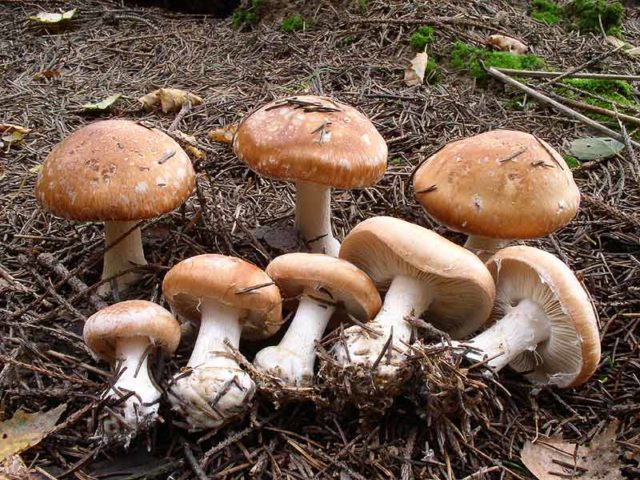
The representative of the genus Leucocortinarius is distinguished by its impressive size
Description of the hat
The cap is very large and can reach 10 cm in diameter. In young specimens, it has a spherical shape with concave edges. In mature, the top of the fruiting body becomes more convex, and its edges are wavy. The color is creamy, brown-orange, dark red with light growths characteristic of this species.
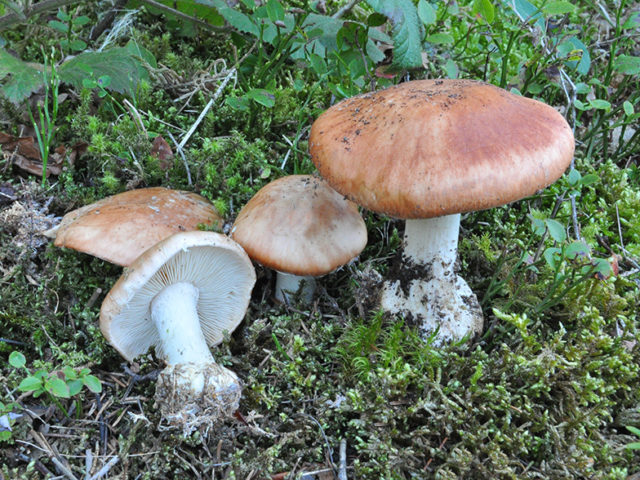
On the cap there are white flakes characteristic of this type - the remnants of a private bedspread
Under the cap there are frequent narrow plates of the hymenophore of cream or light brown color. With age, they darken and acquire a reddish-brown tint.
Leg description
The stem of the fruiting body is solid, cylindrical. The color is whitish, with age it can darken to dark cream or brown. The length of the leg reaches 8-10 cm, and its thickness is 2 cm.
The pulp of the fruit body is juicy, tasteless and odorless, white or light gray in color (leg).
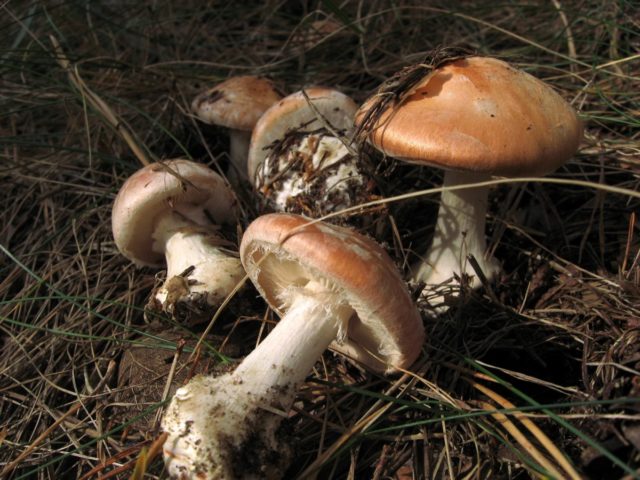
A characteristic feature is the presence at the base of the leg of a thickening and a white cobweb ring
Where and how it grows
This is a rather rare representative - you can rarely meet him. It grows in groups in coniferous (spruce, pine) and mixed forests on the territory of Western and Eastern Siberia, the Far East, and some regions of the European part of Russia. The collection period is from August to October.
Is the mushroom edible or not
Considered conditionally edible. You cannot use this product in its raw form - only after boiling for half an hour, followed by frying, stewing or preserving the product. You should not purchase the bulbous webcap from private hands, since even an edible specimen, for example, collected near a highway, can be poisonous. Also, do not eat old copies.
Doubles and their differences
Tuberous webcap - the only one of the genus Leucocortinarius. However, there are several specimens that are similar in appearance to it.
Light ocher webcap (Cortinarius claricolor) - inedible and poisonous twin, does not have a characteristic tuberous thickening, the color of the cap is warmer with a reddish tinge.
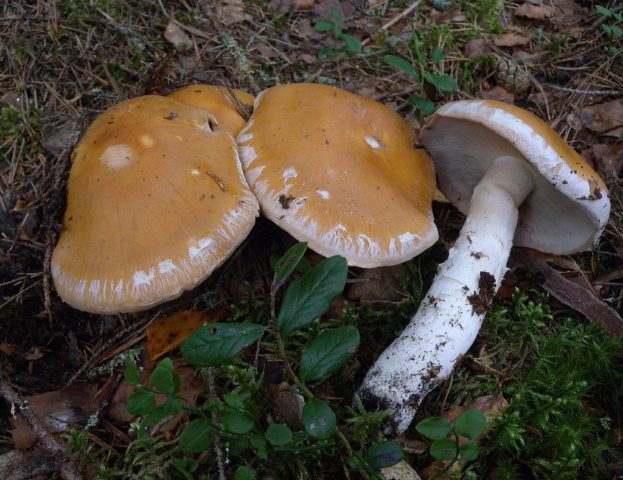
More common on sandy soils
Amanita muscaria (Amanita muscaria) - inedible and hallucinogenic. You can distinguish a double by a thin leg, creamy plates, a cobweb ring with sharp edges. During the drought period, these signs are not so pronounced, therefore, it is worth picking fruits only in rainy weather and together with an experienced mushroom picker.
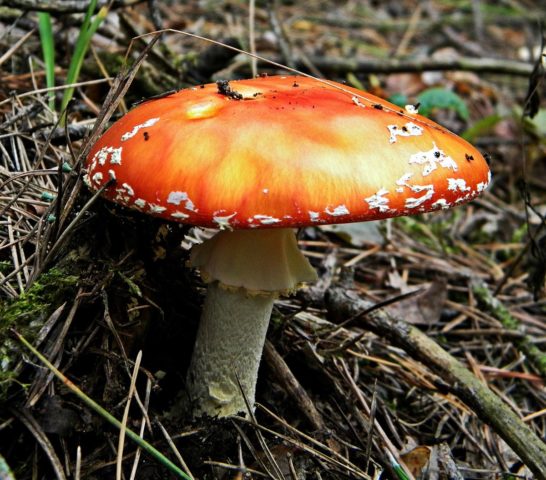
Amanita muscaria with a faded cap looks very similar to the white-web bulbous
Conclusion
Bulbous white-webbed is a little-known mushroom that is extremely rare in the coniferous forests of Russia. The representative of the Ryadovkovye family is not famous for its high taste. However, experienced mushroom pickers appreciate this representative, first of all, for its impressive size. It is important not to confuse the white cobweb with outwardly similar twins, so every mushroom picker should be able to distinguish and recognize this specimen.








